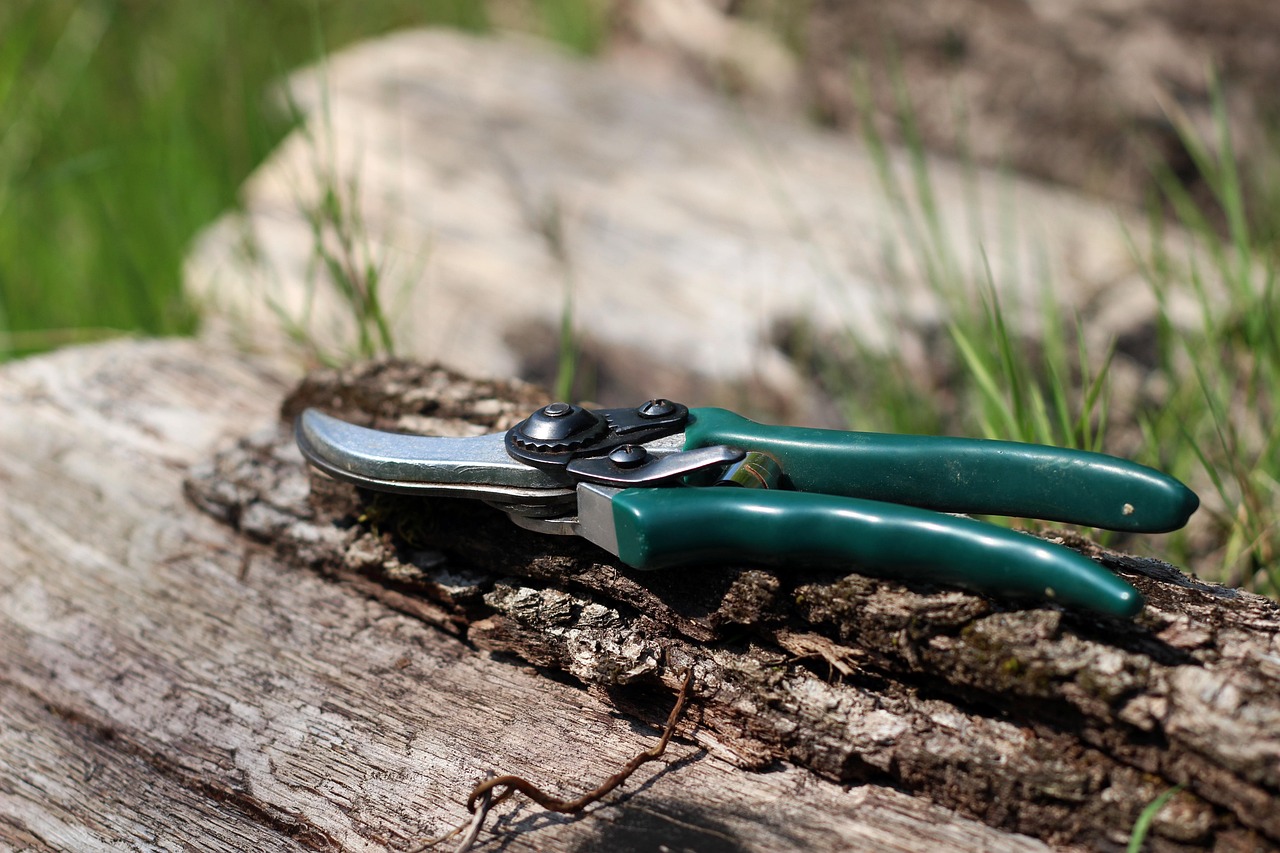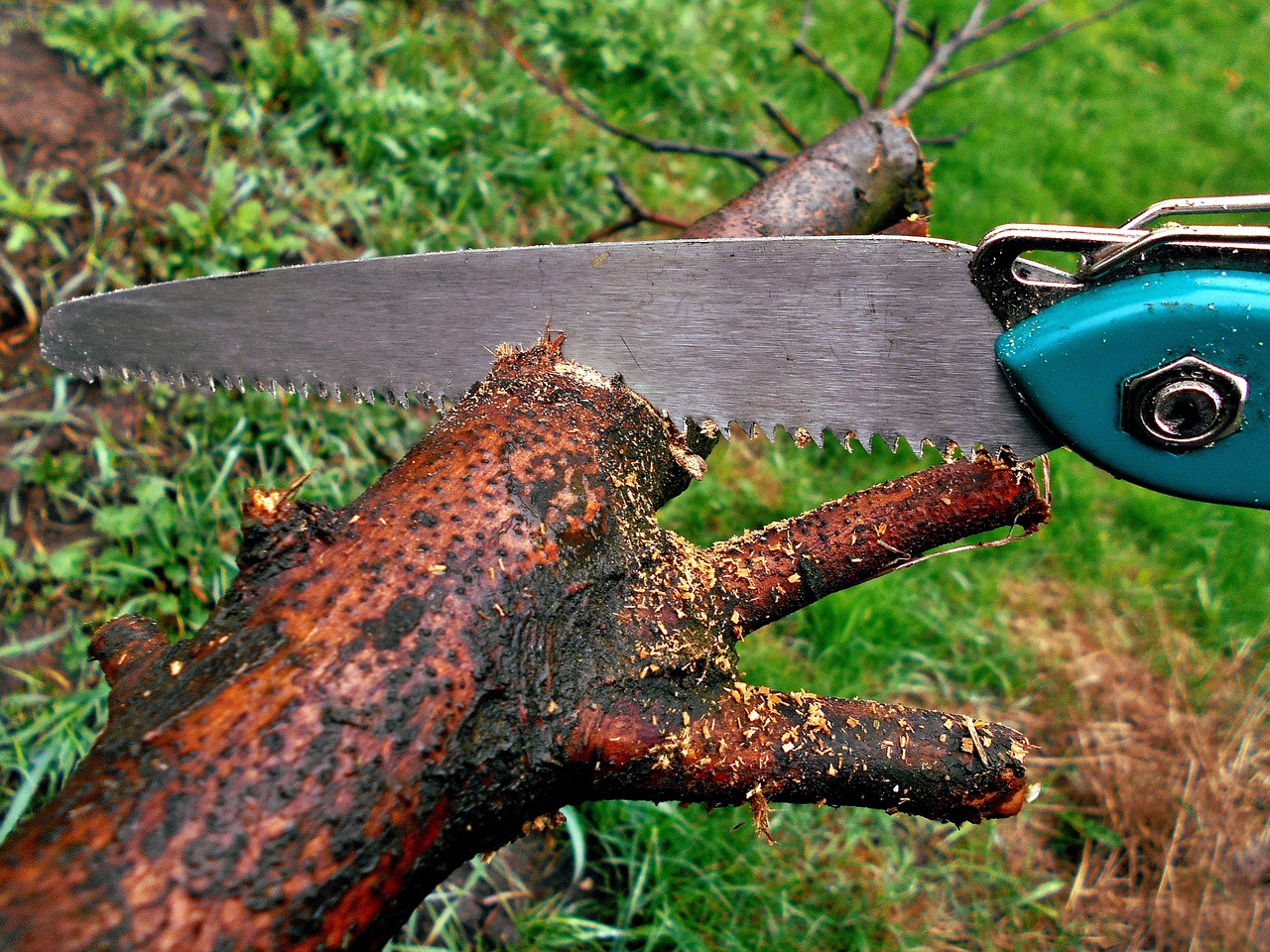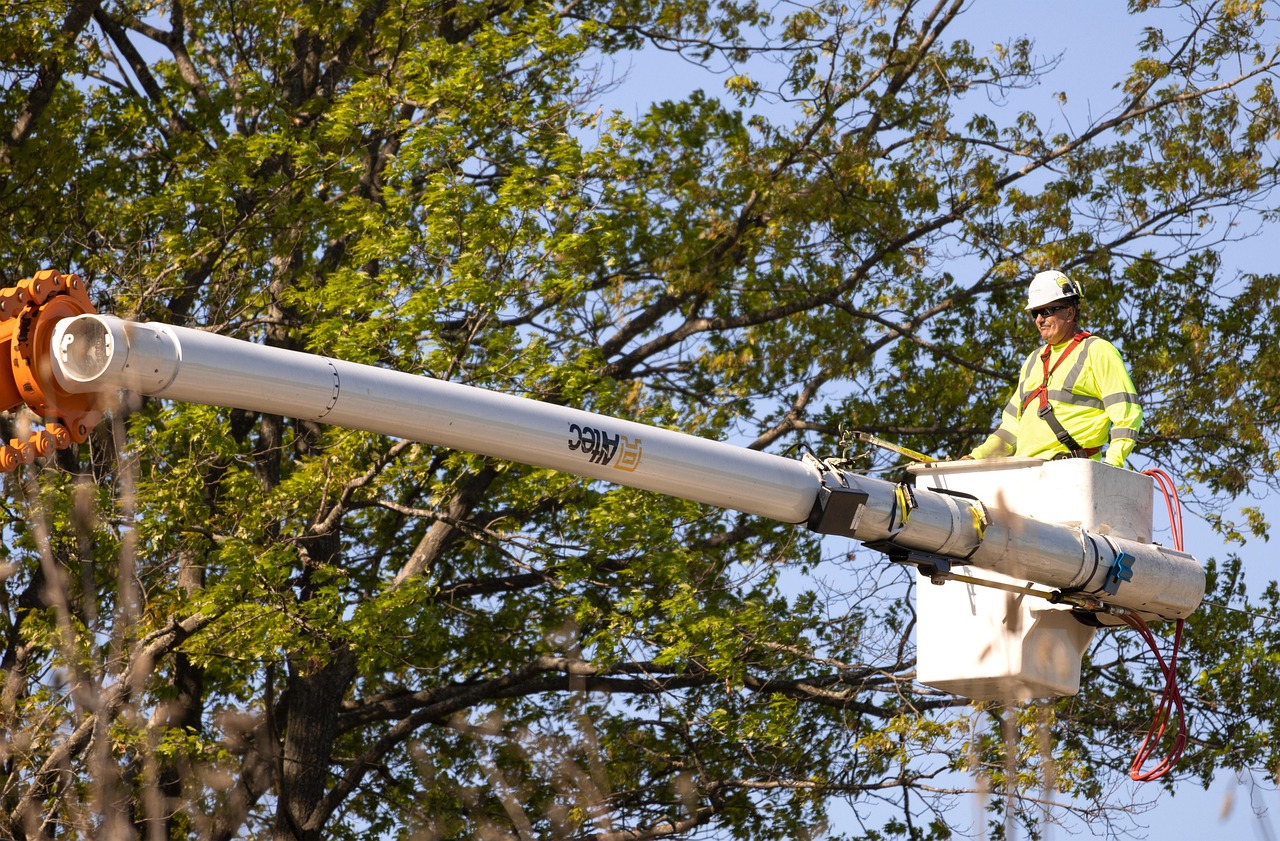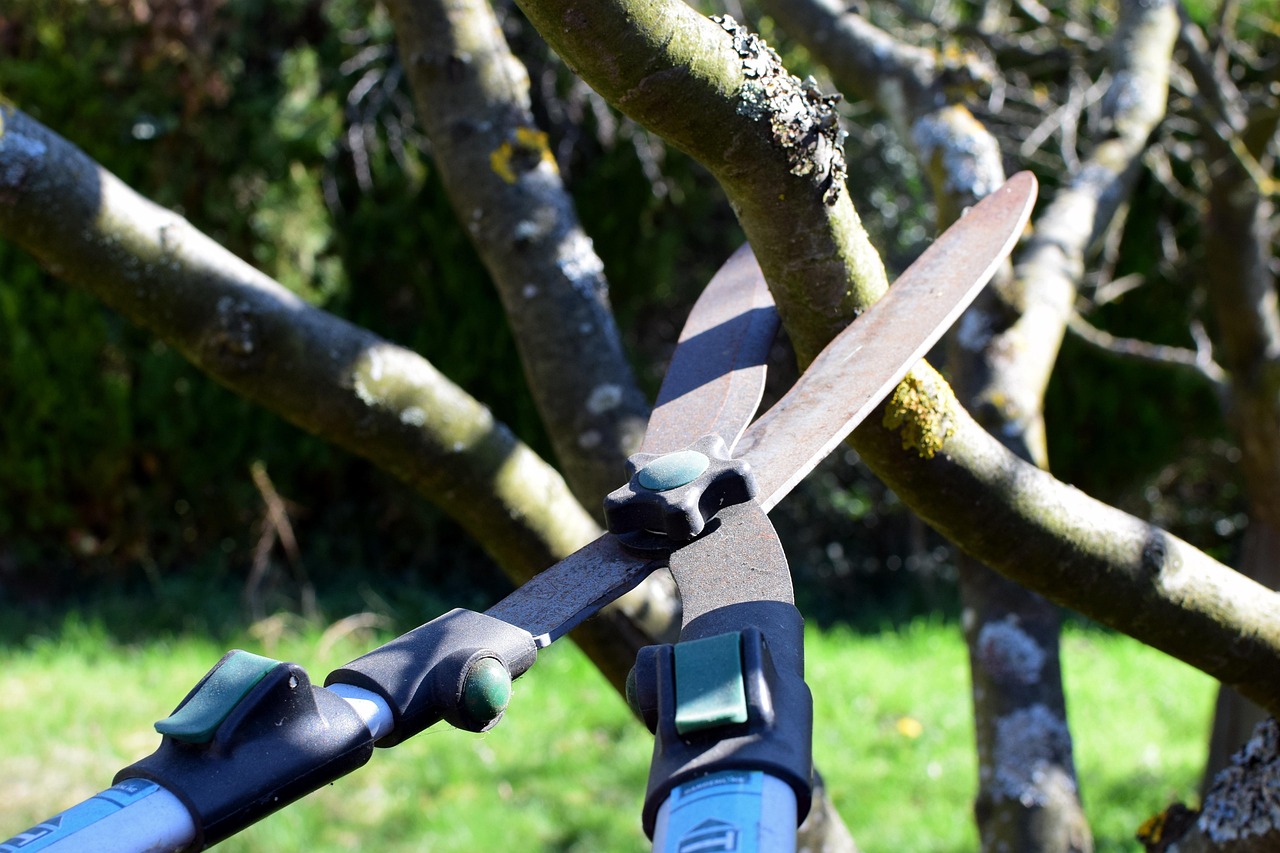Pruning trees for holiday light displays involves selectively trimming branches to create space for lights while maintaining the tree's health and aesthetics. Focus on removing dead or overgrown limbs that obstruct light placement. Aim for an even canopy to enhance visual appeal. Use proper tools and techniques to avoid damaging the tree, ensuring it thrives post-holiday season.
Pruning trees is essential for accommodating holiday light displays. Proper pruning ensures that branches do not obstruct lights and minimizes the risk of electrical hazards. It also enhances the overall appearance of your tree during the festive season.
As the holiday season approaches, many homeowners look forward to decorating their properties with festive lights. Trees often serve as a central feature in these displays, creating a magical atmosphere. However, without proper pruning, branches may interfere with the installation of lights, leading to frustration and potential safety hazards. Understanding how to effectively prune trees can help ensure a successful and visually appealing holiday light display.

Pruning trees involves removing specific branches to promote healthy growth and improve aesthetics. It is crucial to consider the type of tree and its growth patterns before starting the pruning process. Some trees may require more extensive pruning, while others may need only minor adjustments. The timing of pruning is also essential. Most trees benefit from being pruned during their dormant season, typically in late winter or early spring.
Benefits of Pruning Trees
Pruning trees offers numerous advantages that contribute to both the health of the tree and the success of holiday light displays. The following are some key benefits:
- Improved Light Access: Pruning allows more sunlight to reach the inner branches and foliage, promoting healthier growth.
- Enhanced Aesthetics: A well-pruned tree looks more attractive. This enhances the overall visual impact of holiday lights.
- Safety: Removing dead or overgrown branches reduces the risk of falling limbs, especially during winter storms.
- Better Airflow: Pruning improves airflow through the tree, reducing the likelihood of disease and pest infestations.
- Facilitated Lighting Installation: Clear branches make it easier to hang lights without obstruction.
When it comes to holiday decorations, the placement and aesthetic appeal of lights can significantly affect your home’s festive atmosphere. A well-pruned tree not only accommodates lights better but can also serve as a focal point in your holiday display. To maximize these benefits, it’s essential to follow proper pruning techniques.

Understanding Tree Pruning Techniques
There are several pruning techniques that can be employed depending on the specific needs of your tree. Here are some common methods:
- Thinning: This technique involves removing select branches throughout the tree to reduce density. It increases light penetration and air circulation.
- Reduction: This method shortens the length of branches while maintaining the natural shape of the tree. It’s helpful for keeping trees at a manageable height.
- Cleaning: This involves removing dead, damaged, or diseased branches to promote overall health.
- Raising: This technique removes lower branches to provide clearance for pathways, vehicles, or holiday decorations.
Before you start pruning, it’s important to gather the right tools. Basic pruning tools include hand pruners, loppers, and saws. Each tool serves a specific purpose and facilitates easier cutting of branches based on their size and thickness. Ensuring your tools are sharp will make the process smoother and minimize damage to the tree.
When to Prune
The timing of your pruning efforts can significantly affect the health of your tree. Generally, late winter or early spring is considered the best time to prune most deciduous trees. During this period, trees are still dormant, which minimizes stress on the plant. However, certain evergreen trees can be pruned at different times depending on their specific growth patterns.

| Tree Type | Best Pruning Time | Notes |
|---|---|---|
| Deciduous Trees | Late Winter to Early Spring | Avoid pruning during flowering season. |
| Evergreen Trees | Late Spring to Early Summer | Prune lightly to maintain shape. |
| Fruit Trees | Late Winter to Early Spring | Aim for before new growth starts. |
Once you have determined the right time for pruning, you can start planning your approach. It’s essential to assess which branches need attention and visualize how they will affect your holiday light display. Removing branches that block light or create an uneven look will enhance your overall decoration efforts.
In summary, proper pruning is a vital step in preparing trees for holiday light displays. By understanding the benefits, techniques, and timing involved in pruning, you can ensure that your tree not only looks its best but also provides a safe and enjoyable environment for holiday festivities. With careful planning and execution, your holiday display will be a source of joy for both your family and neighbors alike.
Tools and Techniques for Pruning Trees
Having the right tools is essential for effective tree pruning. Using appropriate equipment not only makes the job easier but also ensures that your trees remain healthy. Here’s a closer look at some common tools used for pruning trees and tips on their usage.

Essential Pruning Tools
- Hand Pruners: Ideal for small branches up to ¾ inch in diameter. They are perfect for making clean cuts on live branches.
- Loppers: These are larger than hand pruners and can cut branches up to 2 inches thick. They provide better leverage and reach for higher branches.
- Pruning Saws: Used for larger branches that cannot be cut with pruners or loppers. They come in various sizes and are effective for making precise cuts.
- Pole Pruners: These tools extend your reach, allowing you to prune high branches without using a ladder.
- Safety Gear: Always wear gloves, safety goggles, and long sleeves to protect yourself from sharp tools and falling branches.
Using the right tools helps minimize damage to your trees. Sharp blades ensure clean cuts, which help prevent disease and promote faster healing. Always clean your tools before starting to avoid spreading diseases between trees.
Pruning Techniques to Use
Several pruning techniques can be applied based on the desired outcome. Each technique has its specific purpose and advantages when preparing trees for holiday light displays.
Technique Overview
- Heading Cuts: This involves cutting back the tips of branches to encourage bushier growth. This technique is useful for maintaining the shape of trees.
- Thinning Cuts: Removing entire branches at their point of origin reduces density and increases light penetration. This method enhances air circulation within the tree.
- Reduction Cuts: This technique shortens branches while maintaining their natural form. It helps control height and spread without affecting the tree’s overall health.
- Cleaning: Involves removing dead, damaged, or diseased branches. This technique improves the health of the tree and enhances its appearance.
Understanding these techniques will enable you to make informed decisions about how to prune your trees effectively. Each method serves a purpose and contributes to creating a beautiful holiday display.
How to Prune Trees Safely
Safety is paramount when pruning trees. Accidents can happen if proper precautions are not taken. Here are some tips to ensure a safe pruning experience:
- Assess the Environment: Before beginning, check for overhead power lines and ensure that the area is clear of obstacles.
- Use Proper Technique: Always cut at a downward angle. This helps prevent water from collecting on the cut surface, which can lead to decay.
- Work in Teams: If you plan on pruning large trees or using ladders, it is advisable to have a partner. They can help hold the ladder and provide assistance if needed.
- Avoid Wet Conditions: Wet leaves and branches can be slippery. Choose a dry day for pruning to maintain traction and stability.
- Follow Ladder Safety Guidelines: Ensure that your ladder is stable and positioned correctly. Never overreach while on a ladder; move it as needed.
By following these safety guidelines, you can reduce the risk of injuries while pruning your trees. A safe environment allows you to focus on creating a fantastic holiday light display without worry.
The Best Practices for Holiday Light Displays
After pruning, the next step is hanging your holiday lights effectively. Here are some best practices to consider when decorating your trees with lights:
- Select Appropriate Lights: Choose lights that are designed for outdoor use. This ensures durability and safety against weather elements.
- Plan Your Design: Before starting, sketch out a rough design of how you want your lights to appear. Consider both aesthetics and practicality.
- Use Clips or Hooks: To avoid damaging branches, use clips or hooks designed for hanging lights. These tools keep lights secure without harming the tree.
- Distribute Lights Evenly: Ensure that lights are distributed uniformly across the tree for an appealing look. Avoid clustering them in one area.
- Test Lights Before Hanging: Always test your lights before installation to ensure they are functioning properly.
The organization and planning of your light display can significantly enhance its visual appeal. A well-executed lighting design creates a captivating holiday atmosphere that delights both residents and passersby.
Caring for Pruned Trees Post-Pruning
Caring for your trees after pruning is crucial for their health. Proper post-pruning care helps trees recover from cuts and promotes healthy growth.
- Watering: Ensure your trees receive adequate water after pruning, especially during dry spells. This supports new growth and helps the tree recover.
- Pest Management: Keep an eye out for pests that may exploit weakened areas after pruning. Implement appropriate pest control measures if necessary.
- Mulching: Apply mulch around the base of the tree to retain moisture and regulate soil temperature. This encourages healthy root development.
- Avoid Fertilizing Immediately: Do not fertilize right after pruning, as this can stress the tree. Wait until new growth appears before applying fertilizer.
Caring for your trees post-pruning ensures they remain healthy and vibrant throughout the holiday season and beyond. With attention and care, your trees can thrive while providing a stunning backdrop for your holiday celebrations.
Choosing the Right Trees for Holiday Light Displays
When planning your holiday light displays, selecting the right trees can enhance both the beauty and effectiveness of your decorations. Not all trees are equally suited for showcasing lights. Here are some factors to consider when choosing trees for your holiday displays.
Consider Tree Types
Different types of trees offer unique benefits for holiday lighting. Here are some popular options:
- Evergreen Trees: These trees maintain their foliage year-round, making them ideal for holiday displays. Their dense branches can hold lights well and provide a lush backdrop.
- Deciduous Trees: While these trees lose their leaves in winter, they offer a different aesthetic. They can create an elegant silhouette when wrapped in lights.
- Fruit Trees: These trees can be visually striking when adorned with lights. Their branches often have ample spacing, allowing for creative lighting arrangements.
Each tree type has its unique characteristics that can enhance your overall holiday display. Take the time to assess the natural shape and branch structure of your trees to maximize their potential.
Planning Your Holiday Light Layout
A well-thought-out layout is essential for creating a stunning holiday light display. Here are some steps to help you plan effectively:
Assess Your Space
Begin by evaluating the area where you plan to install lights. Consider the following:
- Available Branch Space: Identify which branches will provide ample support for lights without overcrowding.
- Height and Accessibility: Ensure you can safely reach all areas of the tree without risking injury.
- Surrounding Elements: Consider nearby structures, such as fences or buildings, that may impact your lighting design.
Create a Lighting Design
Your lighting design should reflect your style while emphasizing the natural beauty of the tree. Here are some popular design ideas:
- Classic Wrap: Wrap lights around the trunk and major branches, creating a warm glow.
- Layered Look: Use different colors or types of lights on various branches for a dynamic effect.
- Sculptural Display: Highlight specific branches or areas with focused lighting to create visual interest.
Sketching a rough design can help visualize the arrangement before installation begins. This step can save time and resources during setup.
Types of Holiday Lights
The type of lights you choose can greatly affect your overall display and the maintenance required. Here are some common types of holiday lights:
| Type of Light | Description | Best Use |
|---|---|---|
| Incandescent Lights | Traditional bulbs that provide warm light. | Ideal for classic holiday displays but consume more energy. |
| LED Lights | Energyefficient bulbs that last longer and come in various colors. | Great for large displays, as they use less electricity and stay cool to the touch. |
| Solar Lights | Powered by solar panels, these lights charge during the day. | Best for areas with good sunlight; they are eco-friendly and cost-effective. |
| Candle Lights | Lighted candles designed for outdoor use to mimic traditional candles. | Perfect for adding warmth and elegance to any display. |
Selecting the right type of lights will not only enhance your display but also ensure safety and longevity. Consider energy efficiency, brightness, and color when making your selection.
Hanging Lights: Techniques and Tips
Once you’ve chosen your trees and lights, it’s time to hang them. Here are some techniques to ensure a successful installation:
Techniques for Hanging Lights
- Start from the Bottom: Begin wrapping lights from the base of the tree and work your way up towards the top. This helps avoid tangling.
- Use Extensions Cords Wisely: Ensure that extension cords are rated for outdoor use and keep them hidden to maintain aesthetics.
- Create Depth: Drape lights across different layers of branches to add depth and dimension to your display.
- Avoid Overloading Circuits: Be mindful of how many strands you connect together to prevent electrical overloads.
The hanging process can be time-consuming, but patience pays off with a beautifully lit tree. Make sure to step back periodically to check your progress and adjust as needed.
Maintaining Your Light Display
After setting up your holiday lights, regular maintenance is essential to keep them looking their best throughout the season. Here are some maintenance tips:
- Regular Inspections: Check lights periodically for burnt-out bulbs or loose connections. Replace any faulty components promptly.
- Cleansing Debris: Remove any debris or snow accumulation from branches to prevent damage and maintain visibility.
- Adjust as Needed: If any lights sag or shift, take the time to reposition them to ensure even coverage.
A little maintenance goes a long way in keeping your holiday display vibrant and enjoyable. By paying attention to details, you can create a lasting impression on everyone who sees your beautiful tree adorned with lights.
Enhancing Your Holiday Experience
The process of pruning trees and decorating them for the holiday season is not just about aesthetics; it also creates an opportunity for families and communities to come together. Engaging in these activities can foster a sense of unity and joy. Here are some additional benefits to consider when preparing your trees for holiday lights:
- Strengthening Family Bonds: Pruning and decorating can be a fun family activity. It allows everyone to participate, share ideas, and create lasting memories together.
- Engaging with Neighbors: A beautifully lit tree can become a focal point in the neighborhood. Sharing your holiday spirit through decorations can encourage others to participate and enhance community spirit.
- Creating Traditions: Establishing a yearly tradition of decorating trees can provide a sense of continuity and excitement for children and adults alike.
- Encouraging Outdoor Activity: Working outdoors in the fresh air provides physical activity, which is beneficial for health and well-being.
These aspects highlight that the effort put into pruning and decorating trees goes beyond mere decoration; it encompasses building connections within families and communities, ultimately enhancing the holiday experience.
Safety Considerations During the Holiday Season
While creating a festive atmosphere, it’s crucial to prioritize safety as well. Here are some safety tips to keep in mind during your pruning and decorating efforts:
- Electrical Safety: Always use lights that are rated for outdoor use. Check for damage before installation, and avoid overloading circuits.
- Safe Ladder Use: When using ladders, ensure they are stable on flat ground, and never lean too far to one side. It’s safer to reposition the ladder as needed.
- Tree Health Monitoring: After pruning, monitor your trees for any signs of stress or disease. Early detection can prevent further issues.
- Weather Awareness: Be cautious of weather conditions when pruning or hanging lights. Wind, rain, or snow can create hazardous situations.
Implementing these safety measures will not only protect you but also ensure that your holiday preparations are enjoyable and stress-free.
Final Thoughts
Pruning trees to accommodate holiday light displays is an enriching task that combines practicality with creativity. From ensuring safety to enhancing aesthetics, the process involves careful planning and execution. The right tools, techniques, and tree selection play significant roles in achieving a stunning display that brings joy to your home and community.
The act of pruning not only prepares your trees for lights but also promotes healthy growth, ensuring that they can be enjoyed for years to come. As you decorate this holiday season, remember to take the time to appreciate the beauty of nature and the connections it fosters among family, friends, and neighbors.
By following the tips and guidelines outlined in this article, you can create a vibrant holiday display that reflects your personal style while ensuring the health of your trees. Embrace the joy of the season by engaging in these activities and making unforgettable memories with those you cherish.
This holiday season, let your beautifully pruned and decorated trees serve as a beacon of light and joy in your home, spreading warmth not just through their illumination but through the love and care invested in their preparation.
